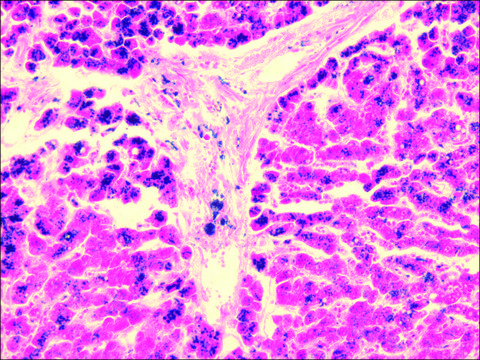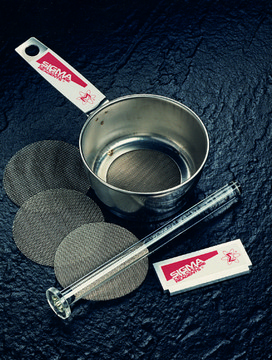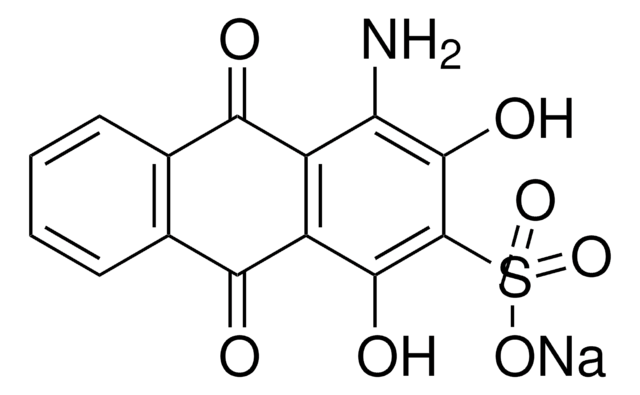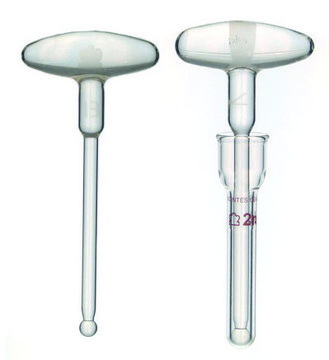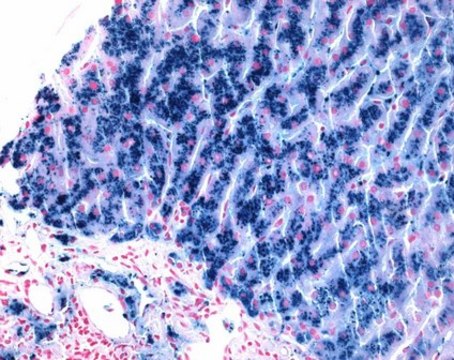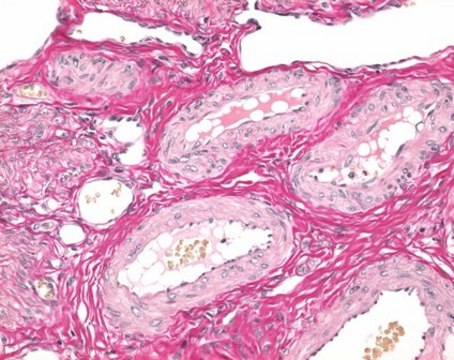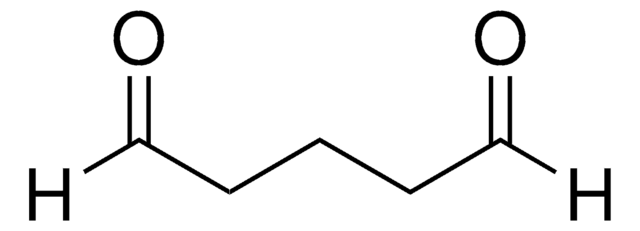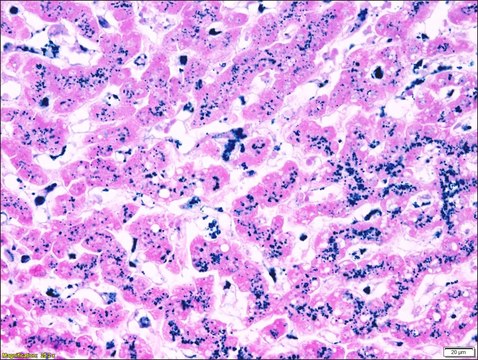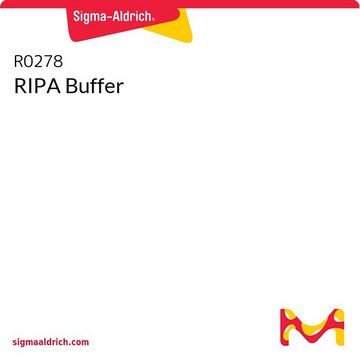All Photos(1)
About This Item
Empirical Formula (Hill Notation):
C6Fe2KN6 · xH2O
CAS Number:
Molecular Weight:
306.89 (anhydrous basis)
MDL number:
UNSPSC Code:
12171500
PubChem Substance ID:
NACRES:
NA.47
Recommended Products
grade
for microscopy
form
powder
solubility
water: 0.1 g/10 mL, blue to very deep blue
εmax
≥120 at 253-263 nm in water
application(s)
diagnostic assay manufacturing
hematology
histology
storage temp.
room temp
SMILES string
[K+].[Fe++].N#C[Fe-3](C#N)(C#N)(C#N)(C#N)C#N
[K+].[Fe++].N#C[Fe-3](C#N)(C#N)(C#N)(C#N)C#N
InChI
1S/6CN.2Fe.K/c6*1-2;;;/q;;;;;;-3;+2;+1
InChI key
ZJSIHHBKYVAMOE-UHFFFAOYSA-N
Application
Prussian blue is not a dye but an inorganic pigment containing ferric ferrocyanide. Procedures have been published for the demonstration of non-hemoglobin, cytoplasmic iron, according to Sundberg and Broman, and for the demonstration of hemosiderin according to Highman and from Lille and Fullmer based the work originally done by Perle in 1867. Prussian Blue is formed in situ in both of these methods. In combination with iron particles such as superparamagnetic iron oxide nanoparticles, Prussian blue may be used for tracking of transplanted cells such as mesenchymal stem cells. Prussian blue may also be used to differentiate slow versus fast cycling cells by methods that monitor iron oxide particle labeling dilution thru cell division.
Storage Class Code
13 - Non Combustible Solids
WGK
WGK 3
Flash Point(F)
Not applicable
Flash Point(C)
Not applicable
Personal Protective Equipment
dust mask type N95 (US), Eyeshields, Gloves
Choose from one of the most recent versions:
Already Own This Product?
Find documentation for the products that you have recently purchased in the Document Library.
A new modification of Perls's reaction for hemosiderin in tissues.
Highman, B.
Archives of Pathology, 33, 937-938 (1942)
Dongbo Liu et al.
Acta biochimica et biophysica Sinica, 43(4), 301-306 (2011-02-25)
An accurate definition of clinical target volume (CTV) is essential for the application of radiotherapy in nasopharyngeal carcinoma (NPC) treatment. A novel epidermal growth factor receptor (EGFR)-targeting contrast agent (C225-USPIO) was designed by conjugating ultrasmall superparamagnetic iron oxide (USPIO) nanoparticles
Chang-Moon Lee et al.
Bioconjugate chemistry, 22(2), 186-192 (2011-01-20)
Oleic acid-conjugated chitosan (oleyl-chitosan) is a powerful platform for encapsulating oleic acid-decorated iron oxide nanoparticles (ION), resulting in a good magnetic resonance imaging (MRI) probe. Oleyl-chitosan could self-assemble into core-shell structures in aqueous solution and provide the effective core compartment
Hiroshi Koiwaya et al.
Journal of molecular and cellular cardiology, 51(1), 33-40 (2011-03-31)
Augmenting neovascularization with the use of endothelial progenitor cells (EPCs) is a therapeutic option to rescue critical limb ischemia (CLI). However, the outcomes have been not so satisfactory. The detectable number of injected EPCs at the ischemic site is rather
Gerlinde Schmidtke-Schrezenmeier et al.
Cytotherapy, 13(8), 962-975 (2011-04-16)
Mesenchymal stromal cells (MSC) are the focus of research in regenerative medicine aiming at the regulatory approval of these cells for specific indications. To cope with the regulatory requirements for somatic cell therapy, novel approaches that do not interfere with
Our team of scientists has experience in all areas of research including Life Science, Material Science, Chemical Synthesis, Chromatography, Analytical and many others.
Contact Technical Service